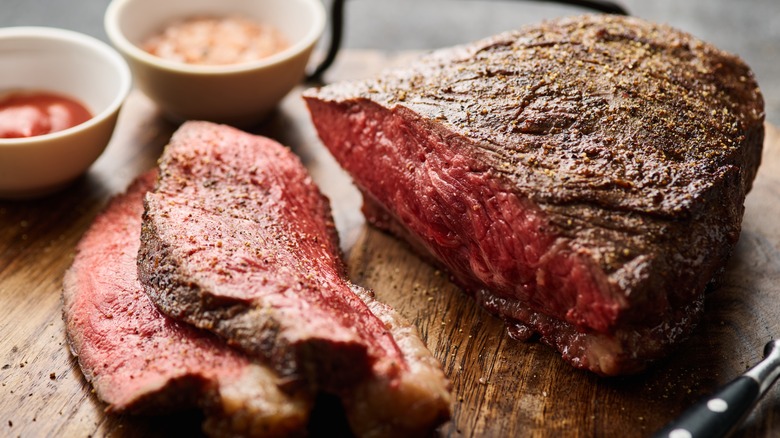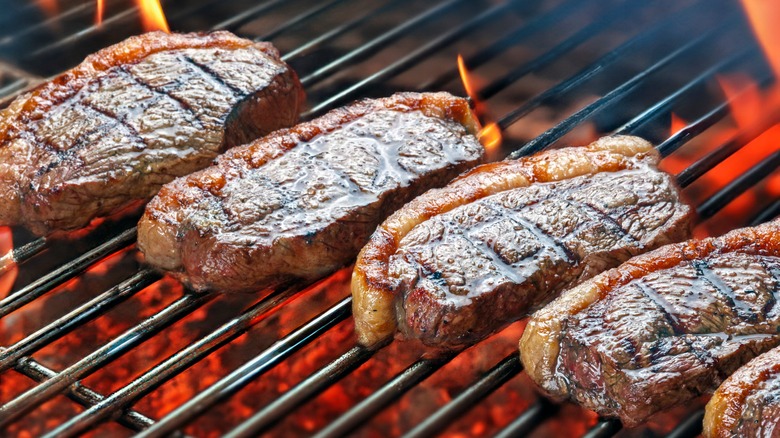How To Cook A Perfect Picanha Steak, According To An Expert
We may receive a commission on purchases made from links.
If you've ever browsed the menu at a Brazilian steakhouse, the name picanha may have caught your attention. Popular in the South American country, it's not a name you spot on too many supermarket shelves or even butcher shops here in the U.S., but it has a lot to recommend it. Also known as a coulotte steak or top sirloin cap, picanha is a pretty lean but still well-marbled cut that is also on the affordable side, which is a great combination for some home-cooked steak. But like any lesser-known cuts of steak, you have to know its peculiarities and how best to cook it if you want to unlock its potential. So Tasting Table spoke with an expert, chef K.C. Gulbro, the owner of FoxFire and Copper Fox, and a chef Ambassador for Certified Angus Beef, to find out how to nail the perfect picanha steak.
Gulbro praised the picanha steak as "an interesting cut that is really coming into popularity," telling us "This cut has a lot of flavor and can be extremely tender." With such a tasty and juicy cut of steak, the best method is to not over-think it. Gulbro advised, "The best way to cook it is on the grill to medium-rare." He says that as far as flavoring goes, "You can use simple salt, pepper, and garlic, but I do enjoy using a rub and marinade method." Gulbro even gave us his own 2-step method for the best picanha steak.
Picanha steak is a flavorful and juicy cut that needs proper prep to avoid getting chewy
While a picanha steak has a lot of potential to be tender, Gulbro did warn of a few things that can trip you up if you don't prep the steak properly. He says that the first thing to look out for is that "this steak can have a vein that if cut wrong, will make it extremely chewy." Gulbro recommends using a jaccard, which is a bladed tenderizer, because that will break up any veins still in the picanha. The JY Cookment jaccard is an affordable option.
The other advice is something you should be doing with most steaks anyway. Gulbro says, "This cut has great marbling, and slicing it against the grain will also help avoid chewiness." This is as easy as finding the lines running through the steak and cutting across them.
One last characteristic of picanha steak is that it often has a large fat cap because of its position on the cow. If this is the case, you should be trimming the fat down to a thin strip before cooking, leaving enough to help keep the steak flavorful and juicy but not enough for it to become a tough, chewy hunk. It can also be helpful to cut a crosshatch pattern in the fat to help it render and brown better as it cooks. If you know those few pitfalls to avoid and follow Gulbro's prep methods, picanha is as good a steak as you'll find at any price.

